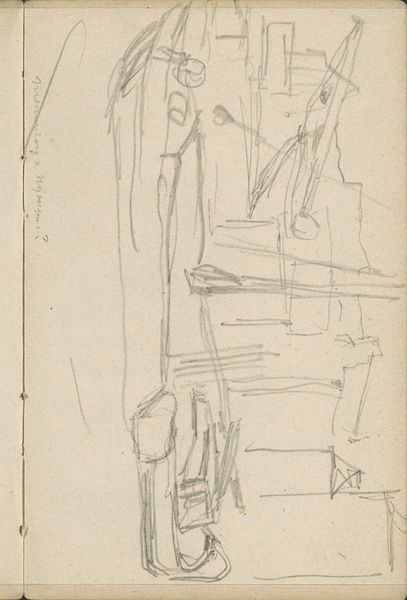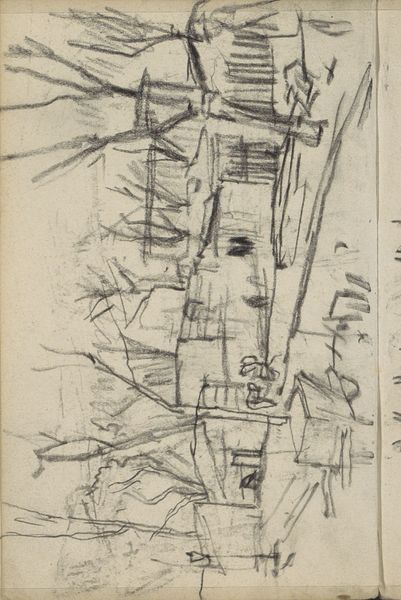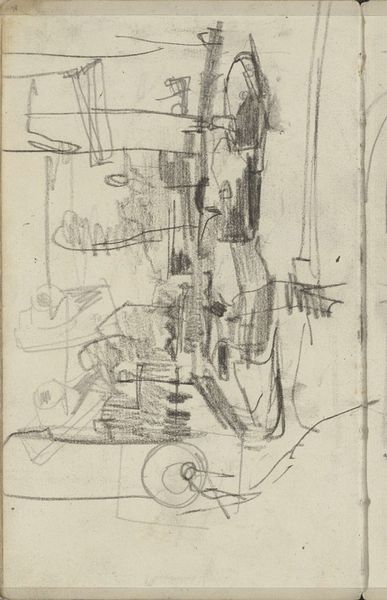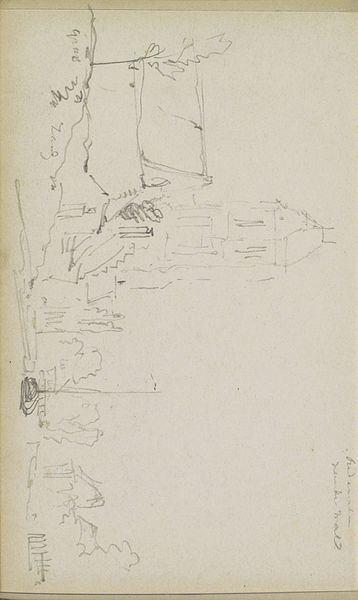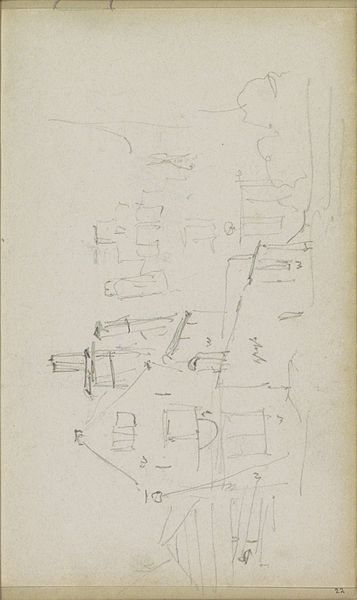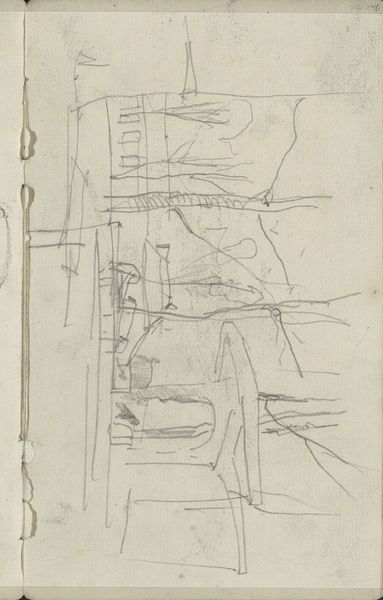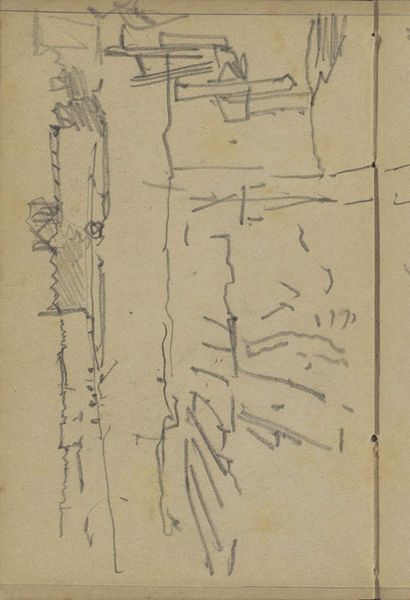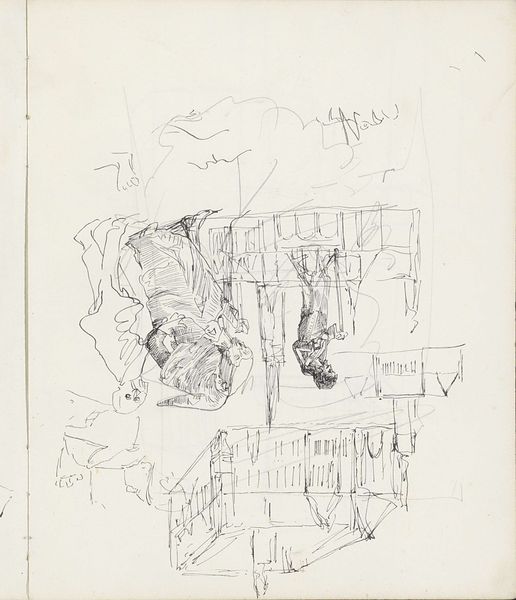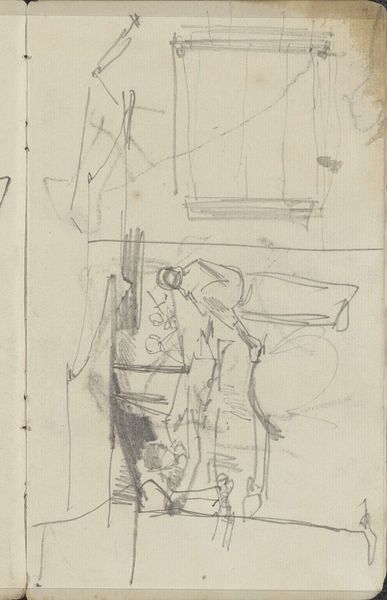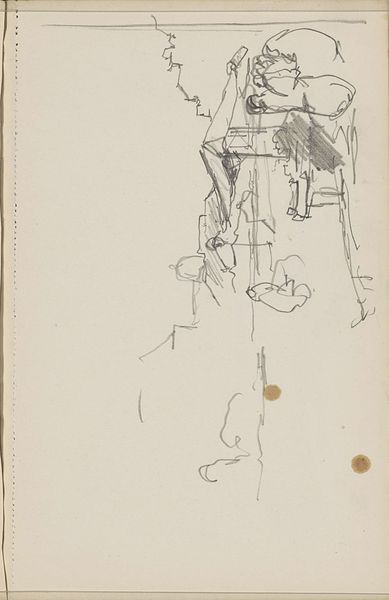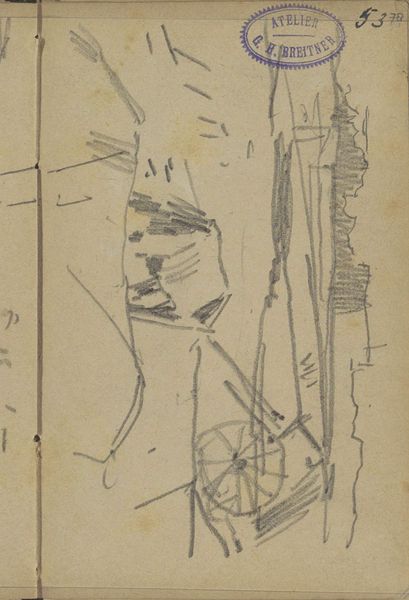
Copyright: Rijks Museum: Open Domain
Curator: Here we have a work by George Hendrik Breitner, dating back to around 1902. It’s a drawing in graphite on paper, titled “View of the Damrak in Amsterdam with Boats.” Editor: You know, it looks like a fleeting thought, a memory just sketched out. Very ephemeral, like a dream fading. Curator: I agree. Breitner's images often documented Amsterdam life, and while they capture it in real time, it's worth considering that there were often social imbalances and conflicts not readily apparent in a simple "street view." Whose perspectives are not seen? Editor: Right, who holds the pencil, right? This rendering is ghostly; the buildings, these vague blocks… the masts like scratches in the sky… you can almost hear the distant foghorns and imagine the seagulls. Curator: It's interesting you bring that up; in considering urban spaces and how people occupy these, we might ask what purpose is served through the artistic choices of the figure not present? Does it offer an access point of sorts? Editor: Absolutely. It offers a view but denies interaction, perhaps reflecting the detachment or perhaps the pre-digital sense of scale one had during the dawn of a world transforming beneath their feet. Nostalgia's always colored, though. Curator: Yes, it underscores the significance of studying how artists' personal biases or historical forces have contributed to erasure of diverse experiences or the normalization of a certain, limited perspective of events. Editor: It truly feels as if this pencil was guided by feelings first, observations after. A beautiful, fragmented moment—like finding an old postcard, incomplete but evocative. Curator: Well said. It encourages us to explore, through careful visual deconstruction, those critical social considerations we all must engage with as active viewers. Editor: Cheers to seeing--and to truly understanding.
Comments
No comments
Be the first to comment and join the conversation on the ultimate creative platform.
